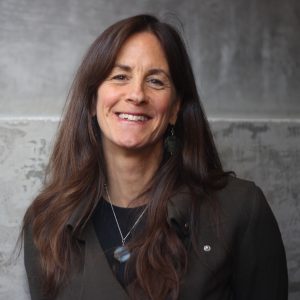Each month, the MA in Sustainable Design program invites a special guest for our Town Hall series where students, faculty, and alumni get to meet and chat with a leader in the field of sustainability or sustainable design.
This month’s guest was Alex Wolf, Founder of Na2ure and RISD sculptor/designer turned inventor of platforms and STEAM games.
Your work with patterns in Nature is fascinating, especially to those of us who work in Biomimicry. How did these ideas and projects emerge?
During my BFA at RISD in sculpture, I explored many different forms of art and design. When I interned at Milton Glaser, I had my first experience with wanting to design children’s books. In those days, I actually set type by hand. Which is so intimate, I started anthropomorphizing the letter forms. It was then that I started getting interested in how children see things.
When I had my daughter, I began to look at her toys as sculptures.It really hit me — particularly after 9/11 hit and Al Gore — that all these toys were rubbish and didn’t do anything to connect her to nature. I wondered what a child could play with to learn about nature that wasn’t nature itself.
I started a card game about trees, Old Maid. It ended up being a game of all the patterns of bark as a side game to the first idea. For the very young, they only needed to match patterns. It was a way to teach children the patterns of nature, starting at age 4, when they really notice things.
As I explored further, I started wondering why there wasn’t a Period Table of biology. I love nature, but biology — as in biology class — really doesn’t resonate with me. I wondered how this chain from nature to biology class got broken. I thought that the Tree of Life was a mess, and the Linnaean Taxonomy system was just words. So I made a periodic table of biology!
I wanted to make things accessible to children so that they could take them away and use them and learn. I also wanted these toys to be beautiful, so the parents would want to play with them, too.
Talk about your Pattern Alphabet and what emerged from there
Peter Stevens’s Patterns in Nature book was a huge inspiration for me. I started wondering: What are these patterns? Where are they? How can we present them as groups? You can easily see groupings like radial symmetry (cucumbers and sea anemones) vs bilateral symmetry (orchids and beetles). These patterns extended into spatial mobility.
I started working with NASA, as Vik Shyam’s team encoded the patternABC into their Periodic Table of Life(PeTaL) machine vision AI . Marjan Eggermont (of Zygote) is an editor along with Vik, and Aloysious Hepp of the first textbook on Biomimicry, a two volume set with one on education, materials and habitats, and the second on aerospace. We wrote a chapter for the first volume, which Elsevier publishes in June 2021.
You’ve worked with preschoolers to PhDs, and even AI. What other lessons have emerged for you, particularly about connecting to nature?
At the preschool level, you learn experientially, without words. It is second nature to us. We inherently know so many things about nature, about spatial reasoning and logic. We can see and feel and understand things without words or numbers. All math starts with learning from nature.
For adults, the Pattern Alphabet is a tool for creativity and design thinking. This need is beginning to be recognized. We need more divergent thinking to balance our convergent thinking, to get our minds to be more flexible. Incremental change is no longer adequate. There needs to be a big push for design literacy to be equal to literacy and numeracy, it will help design thinking, and design is a great way to have children process what they see in nature.
Do you have a parting thought to share?
If we want more da Vincis, we need to let more kids run around in nature!
Thank you, Alex!

